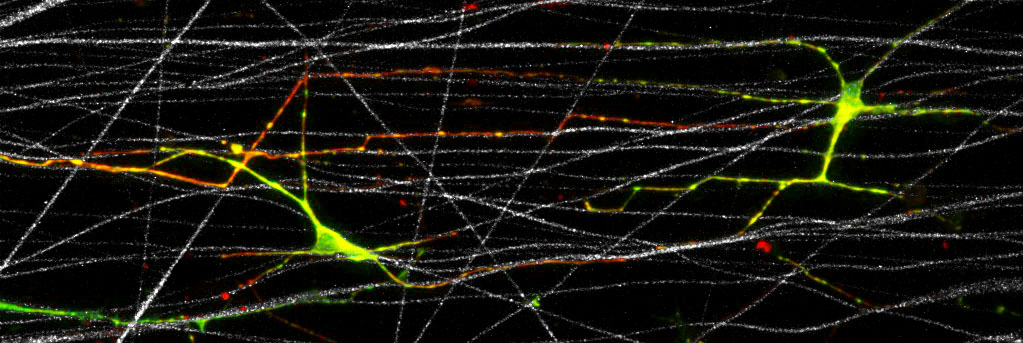
In the CoEBoC, the development of the human-based multi-tissue in vitro platform including brain organ and innervation is in the main focus. In this study, the novel electrospinning method based on rotating dual electrode was developed. The aim was to construct a layered 3D scaffold for human induced pluripotent stem cell (hPSC)-derived neuronal cells and achieve more central nervous system (CNS) microenvironment mimicking organ model. Researchers wanted to mimic guiding cues that naturally occurs in the brain and spinal cord enabling directed axonal growth by utilizing electrospun fibers and to study cell response to those offered cues.
As a result, we successfully developed a novel technique that allows assembly of the whole scaffold in one process. The fork-shaped dual electrode collector produces and transfers highly aligned fibers on the cell-laden, freshly cast hydrogel. The final scaffold consisted of three highly aligned electrospun polylactide (PLA) fiber layers embedded into the collagen 1 hydrogel. Neurons near the fibers showed more elongated morphology than neurons in control hydrogel without the fibers. In addition, neurites contacting the fibers followed their direction.
The electrospinning equipment was setup in collaboration with Prof. Kalle Levon’s team from Department of Chemical and Biomolecular Engineering, New York University Tandon School of Engineering, New York, United States.
Research was funded by Academy of Finland and Instrumentarium Science Foundation.
Laura Honkamäki, Tiina Joki, Nikita Grigoryev, Kalle Levon, Laura Ylä-Outinen*, Susanna Narkilahti*, ”Novel method to produce a layered 3D scaffold for human pluripotent stem cell-derived neuronal cells”, Journal of Neuroscience Methods, vol 350, Article ID 109043, 2021
https://doi.org/10.1016/j.jneumeth.2020.109043

